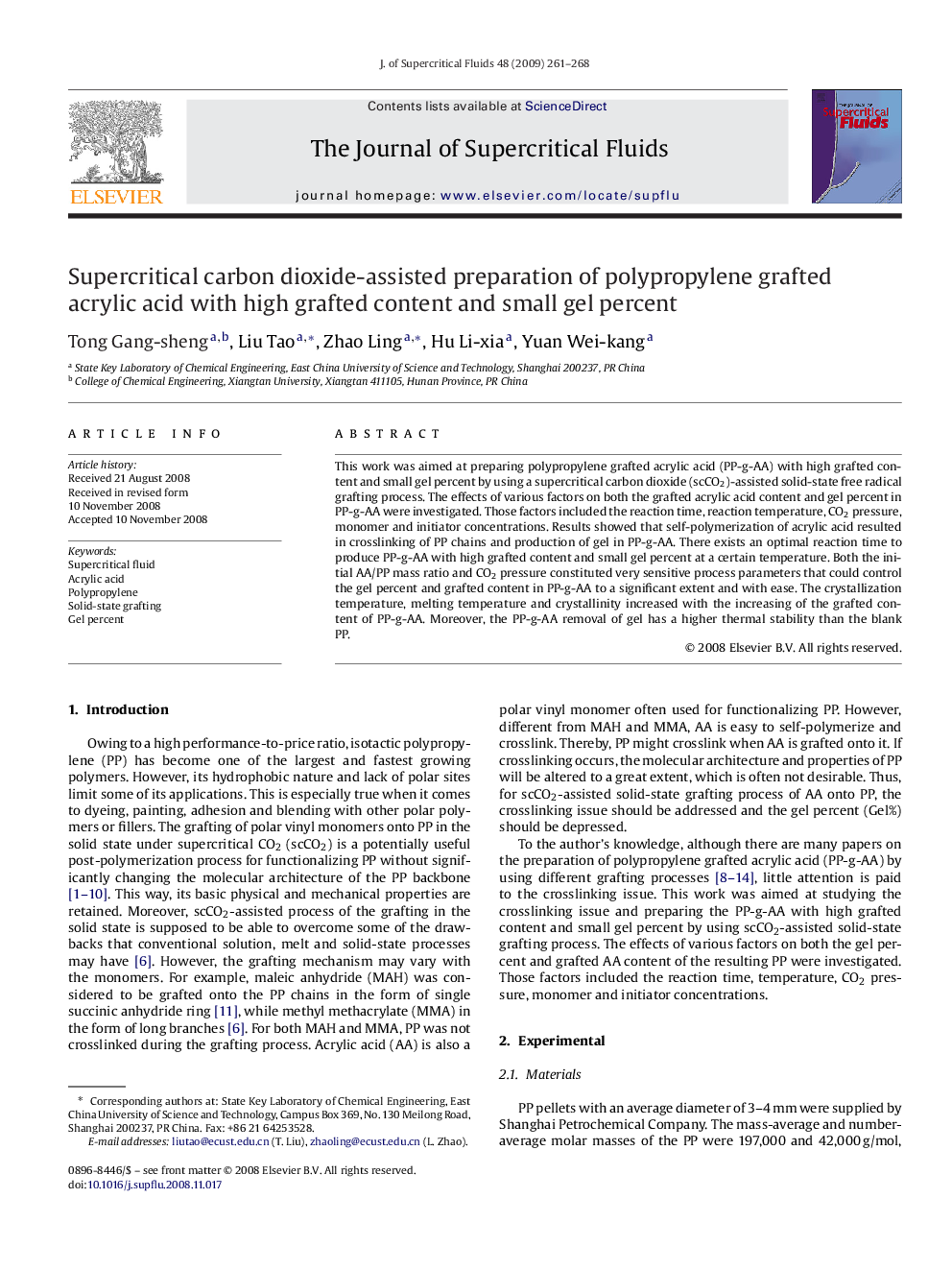| Article ID | Journal | Published Year | Pages | File Type |
|---|---|---|---|---|
| 231758 | The Journal of Supercritical Fluids | 2009 | 8 Pages |
This work was aimed at preparing polypropylene grafted acrylic acid (PP-g-AA) with high grafted content and small gel percent by using a supercritical carbon dioxide (scCO2)-assisted solid-state free radical grafting process. The effects of various factors on both the grafted acrylic acid content and gel percent in PP-g-AA were investigated. Those factors included the reaction time, reaction temperature, CO2 pressure, monomer and initiator concentrations. Results showed that self-polymerization of acrylic acid resulted in crosslinking of PP chains and production of gel in PP-g-AA. There exists an optimal reaction time to produce PP-g-AA with high grafted content and small gel percent at a certain temperature. Both the initial AA/PP mass ratio and CO2 pressure constituted very sensitive process parameters that could control the gel percent and grafted content in PP-g-AA to a significant extent and with ease. The crystallization temperature, melting temperature and crystallinity increased with the increasing of the grafted content of PP-g-AA. Moreover, the PP-g-AA removal of gel has a higher thermal stability than the blank PP.
Graphical abstractSelf-polymerization of acrylic acid resulted in crosslinking of PP chains and production of gel in PP-g-AA. Both the initial AA/PP mass ratio and CO2 pressure constituted very sensitive process parameters that could control the gel percent and grafted content in PP-g-AA to a significant extent and with ease.Figure optionsDownload full-size imageDownload as PowerPoint slide
